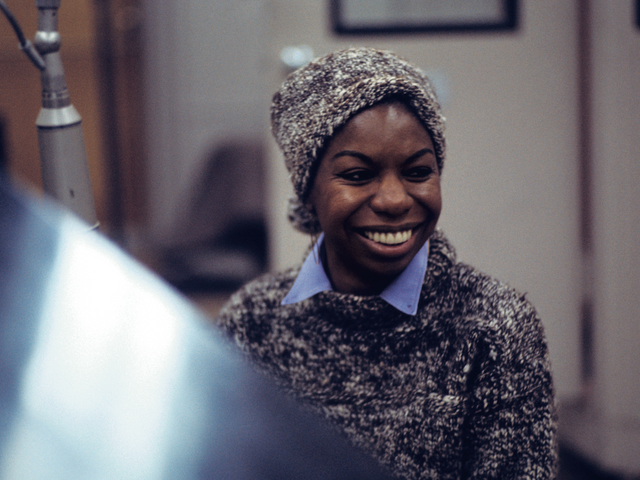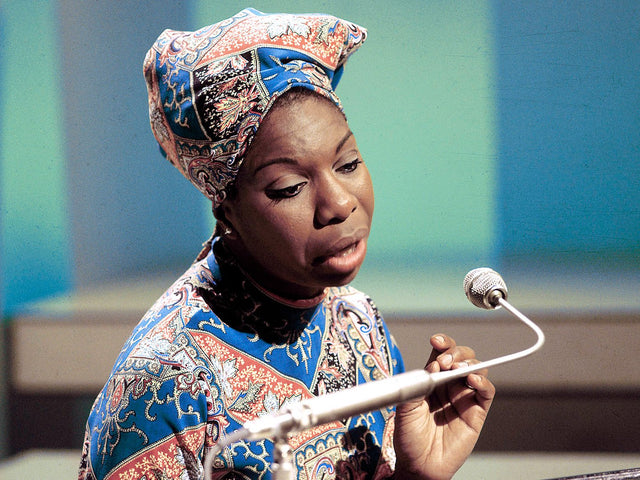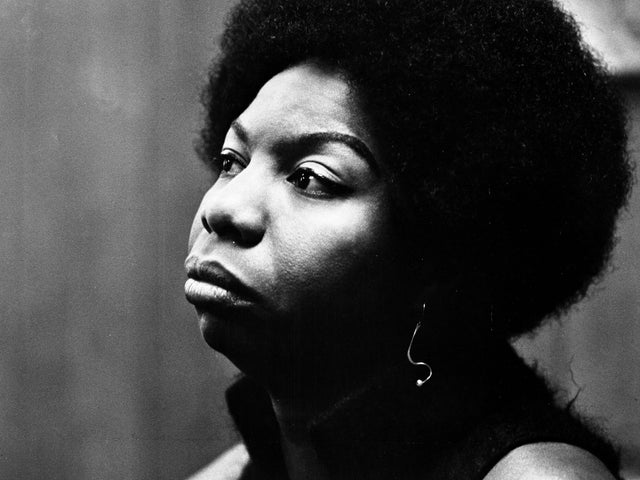擁有的10張最佳尼娜·西蒙黑膠專輯
你有尼娜·西蒙的《藍調之歌》即將到來,這裡有10張更多的尼娜專輯可供選擇
在我尋找 閱讀每一本妮娜·西蒙的書籍和觀看每一部妮娜·西蒙的電影 的過程中,我發現這些媒體都沒有提到哪些妮娜·西蒙的專輯是最好的。在她的職業生涯中,她發行了近50張錄音室專輯和現場專輯,來自一些不太正規的廠牌的合輯和非官方專輯則將這個數字推高到了75。我們認為 Nina Simone Sings the Blues 是最佳的妮娜·西蒙專輯,但我們也認為你的妮娜·西蒙收藏不應該止於此。因此,這裡是10張必擁有的妮娜·西蒙黑膠專輯。

小女孩藍調 (1958)
Nina的首張專輯在她歌唱事業的早期階段對她來說是一個痛點;在她未能接受幾個古典音樂計劃的幾年後,在俱樂部巡演中獲得了一些名聲,她的《I Loves You, Porgy》改編版大獲成功。她的唱片公司Bethlehem急忙讓她進入錄音室錄製這張專輯——她最純粹的爵士歌手專輯——並說服她以3,000美元出售這裡所有歌曲的權利,這在《Porgy》持續大受歡迎,以及《My Baby Just Cares for Me》在1980年代由香奈兒第五號的廣告推廣後,最終讓她在版稅上損失了數百萬美元。你可以窺見如果Nina選擇當一名著名爵士鋼琴家,她可能會走上不同的音樂方向;這是她唱片中最為平滑、最適合酒會的專輯。

Nina Simone 現場演出 (1964)
在1964年初,Nina與Philips Records簽約,這張專輯成為她為其發行的首張專輯。由1964年卡內基音樂廳的三場演出歌曲組成,這張專輯因Nina明顯轉向公民權利運動而具有重要意義,她不再關心迎合喜歡《I Loves You, Porgy》的聽眾,而更關心記錄美國運動發生的現實。這張專輯中她最持久的公民權利讚歌《Mississippi Goddam》以她稍微幽默的形式演唱,雖然她以後會更嚴肅,但其歌詞仍比任何演講更具衝擊力。她還將《Pirate Jenny》從〈三毛戲〉改編為公民權利的隱喻,使這首歌比原版更加深具影響力和令人驚豔。如果你想了解Nina現場的強大,這就是證據。

我對你施了魔法 (1965)
Nina Simone在“經典搖滾”和“經典靈魂”典籍中的地位有時被不公地限於這張專輯的兩首歌曲:她有管弦樂伴奏的《我對你施了魔法》和《感覺很好》,這是她播放頻率最高的歌曲。Nina的事業過於龐大和多變,無法簡化為單一專輯或歌曲,因此人們很難進入她的音樂世界。你不知道從哪裡開始。不過,這張專輯卻很容易入門,因為那兩首前面提到的歌曲是每個父母都知道的。把這張專輯作為《Nina Simone Sings the Blues》的伴隨,但不要讓你的Nina收藏止於此。

柔和的藍調 (1965)
我們知道你會獲得《Nina Simone Sings the Blues》,但如果我們可以要求你擁有至少一張Nina Simone的唱片,那麼就要這張。與《Sings the Blues》一起,這是Nina最“完整”的專輯,展現了她的爵士風格,能夠唱出深刻而有影響力的藍調,以及對她來說比她所做的一切都更重要的抗議歌曲(對她的觀眾來說更為重要)。這張專輯中包括了她的十分鐘絕活《Sinnerman》,這是一首傳統的非洲美國靈歌,以及她標誌性的《Strange Fruit》翻唱,當《Yeezus》中使用時又重新回到了人們的視野中。你還會聽到《Be My Husband》,這首歌只有Nina的聲音和輕打擊樂,證明了她的聲音有如一支軍隊的音樂家,使這首歌充滿力量。你的收藏如果沒有這張專輯將會不完整。

靈魂女祭司 (1967)
這是一張混合了非裔美國民謠和福音歌曲的專輯,還有聽起來像它們的原創作品,靈魂女祭司是Nina最充滿活力的專輯之一;她在這裡唱得非常投入,徹底駕馭著管樂和合唱團。這是她為Philips的最後一張專輯,她再也不會創作聽起來如此與流行靈魂音樂緊密相連的音樂。這毫不妨礙它的重要性;這張專輯中包含了她許多令人難以置信的原創作品,如《Take Me to the Water》。

絲綢與靈魂 (1967)
絲綢與靈魂是對Nina Simone Sings the Blues的直接延續,它代表了Nina事業中被人忽視的一面;她與戴安娜·羅斯和艾瑞莎·弗蘭克林等藝術家展開的公開競爭,這些藝術家經常登上非裔美國媒體的雜誌,並賣出了比Nina多得多的唱片。絲綢和靈魂是Nina整個音樂生涯中最純粹的靈魂專輯,甚至因這張專輯的《Go to Hell》獲得了一項最佳R&B表演的葛萊美提名,但最後她輸給了弗蘭克林。這同時也證明了即便Nina想要與她那一代的商業巨頭競爭,她仍然確保包含像《I Wish I Knew How it Would Feel to Be Free》這樣的歌曲。

‘Nuff Said (1968)
這是一張現場/錄音室專輯,‘Nuff Said捕捉了Nina在1968年Westbury音樂會中的表現,演唱了Bee Gees的歌曲(《Please Read Me》和《In the Morning》),以及《Nina Simone Sings the Blues》中多首歌曲,面對著一群熱情的觀眾。儘管如此,這張專輯在今年卻獲得了更多的現今流行文化相關性,因為Kanye West在有蕾哈娜參與的《Famous》中取樣了《Do What You Gotta Do》。

一個非常罕見的晚上 (1969; 直到1979年才發行)
我們需要在這個名單中加入至少一張尋寶者的特別專輯。這張被認為是Nina Simone最稀有的專輯之一,這張現場專輯在1979年由小型的PM Records發行,包含了Nina在1969年在歐洲的錄音。其中涵蓋了艾瑞莎、百鴨、皮特·西根及更多的精彩翻唱,並且在美國從1979年到今年Tidal Waves Music重新發行之前均銷售斷貨。

陽光普照 (1971)
Nina作為表演者的能力中一個被低估的部分是她能夠徹底拆解並重新賦予當時標誌性流行歌曲的語境。她沒有翻唱晦澀的歌曲;她翻唱的都是大熱門歌曲,一旦Nina抓住一首歌,它就不再聽起來像原作。這首歌現在屬於她。沒有什麼能比她在1971年這張專輯中翻唱的《My Way》更能表現這一點,她拆解了這首歌,改變了節奏,使其完全不同於保羅·安卡所寫的版本。對喬治·哈里森的同名主題曲和鮑勃·迪倫的《如同女人》她也是如此。

巴爾的摩 (1977)
在1974年,Nina Simone發行了*它結束了*,她為RCA製作的最後一張專輯,也是廣泛報導的她的最後一張專輯。但預測中的情況是,當她回到國外並想要吸引公眾注意力時,她再次回到了錄音室,與小型音樂廠牌CTI簽約,這是由爵士製作人Creed Taylor運營的公司。Simone對這張專輯表達了不滿,認為其受雷鬼音影響過多,但這張專輯在她後期重新開始受到重視,因為這張專輯中的主題曲——一首蘭迪·紐曼的翻唱——在去年的巴爾的摩抗議中引獲得了新的生命。事實上,這一曲來源於她最後的錄音室專輯,卻能在之後變成抗議讚歌,再次證明了Nina的偉大。
Andrew Winistorfer is Senior Director of Music and Editorial at Vinyl Me, Please, and a writer and editor of their books, 100 Albums You Need in Your Collection and The Best Record Stores in the United States. He’s written Listening Notes for more than 30 VMP releases, co-produced multiple VMP Anthologies, and executive produced the VMP Anthologies The Story of Vanguard, The Story of Willie Nelson, Miles Davis: The Electric Years and The Story of Waylon Jennings. He lives in Saint Paul, Minnesota.



